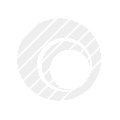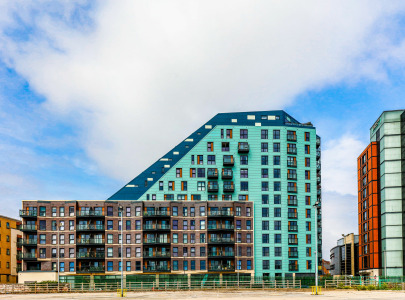A1 Powder Coatings - What it actually means
7 Apr 2022
What are the Recognised Industry and Certification Standards?
In the UK market, BS EN 12206 is the British Standard for architectural powder coating. This defines the minimum coating weight to be applied to a substrate’s “significant surface”.
According to this standard, the average for the significant surface when measured in accordance with BS EN 12206 should not be less than 50 microns thick. Annex C defines the measuring standard, which states not less than 5 measuring points should be taken evenly distributed across the significant surface. At each location, measurements are taken and the average reading used for that area. Averages are used given the variability that may occur in the nature and shape of products, creating significant changes in the coating thickness.
The key differences between A1 and A2 Powder Coatings – fire ratings
In the current market where some companies are promoting ‘A1 rated powder coatings’, there is a delicate relationship between the calorific value of a powder coating and the long-term durability of the coating. In some cases, the maximum coating thickness is limited to 60 or 70 micron (depending on the powder specification) and has gained an A1 fire rating based on that specific calorific value with a strictly limited maximum thickness. In these cases, in order to offer the minimum quality standard as defined by Qualicoat and also maintain a calorific value for A1, it would be necessary to coat the surface an average greater than 60 micron, but also less than 70 micron – which is not impossible, but improbable due to the tolerance limits. Furthermore, colour selection has a significant bearing on the process; certain colours, in particular shades of white or yellow require thicker coating, typically 70 microns, in order to ensure opacity, repeatability and prevent bloom of the substrate
Powder coating to A1 limits in practice
When referring to BS EN 12206 limits, even when using process controls of automatic sensing for product form and shape, circa 20-30 micron tolerance is required for flat product, and up to 50 micron tolerance required for corners / shapes. Therefore, when aiming to achieve A1, there would be a tolerance of application between at 10- 20 micron. Whilst this may be achievable in a controlled environment, in a repeatable and mass production environment with varying shapes, of critical importance would be the repeatability of this standard, and the methods implemented to ensure compliance to the necessary standards for both upper and lower limits.
Qualicoat is generally seen as the premium third party certification that architectural powder coatings should be assessed to in order to provide the end user with confidence in the quality, reliability and serviceability of the coating. This is a globally recognised third-party approval process, through which annual assessments of the coating environment and product are undertaken to ensure compliance. Qualicoat standards are slightly improved upon that defined in BS EN 12206. Amongst other tests that must be performed, the coating weight is increased from the above minimum standard of BS EN 12206, following the same testing method.
The following is a relevant excerpt from Qualicoat 16th Edition specifications:
The Specifications may be amended when risks of impartiality have been identified or when they need to conform to new standards. The aim of these Specifications is to establish minimum requirements that plant installations, organic coating materials, chemical conversion materials, processes and finished products shall meet. These Specifications form the basis for granting and renewing the quality label.
It should be noted that BS EN 12206 and Qualicoat do not specify an upper thickness limit, in part due to the process capability of electrostatic powder coating equipment, and given the varying shape and form of panels, extrusions and frames. Unless powder coating a flat sheet, the inevitable requirements for touch up manually with powder and ‘picture framing’ effects dictate an increased coverage will always occur in certain locations. This isn’t necessarily detrimental to quality of the coating and long-term serviceability, but may have some aesthetic affects, such as ‘orange peel effect’ if excessive.
Ash & Lacy Building Systems
Website
Email Us
T: 0121 525 1444
Bromford Lane
B70 7JJ
West Bromwich, West Midlands
United Kingdom
See Ash & Lacy Building Systems at IFSEC International 2022
Ash & Lacy Building Systems will be exhibiting on Stand FI1202 at IFSEC International 2022, 16 - 18 May 2023, ExCeL, London, UK

Product
Non-Combustible Aluminium Rainscreen Cladding
Ideal for recladding and refurbishment schemes, our rainscreen cladding systems allow designers to create complex and interesting façades, with an economic load bearing structure. The need for complicated detailing and the risk of cold-bridging is dramatically reduced by careful engineering during development...

Product
Non-Combustible Brick Cladding
Ideal for recladding and refurbishment schemes ,our brick cladding systems allow designer to create complex and interesting façades, with an economic load bearing structure. The need for complicated detailing and the risk of cold bridging is dramatically reduced by careful engineering during development.
...

Product
Non-Combustible Cladding Support Systems
The AxiAL range of rainscreen support systems and lightweight framing components has been developed by industry experts t deliver new performance standards. From the unique castellated strength of our aluminium components, to the superior thermal properties of stainless steel, AxiAL systems ensure optimum str...



